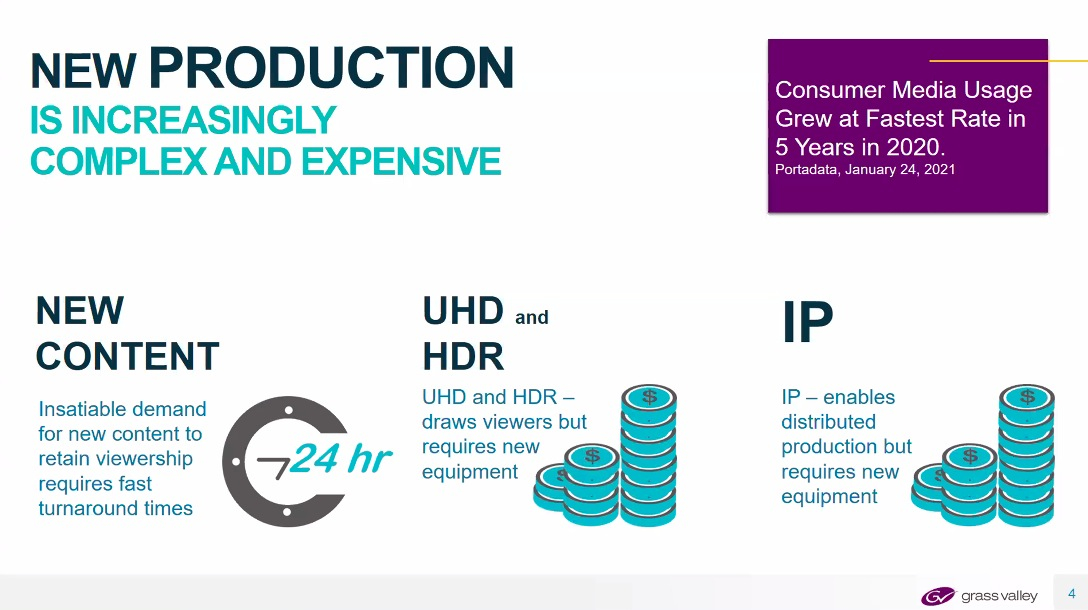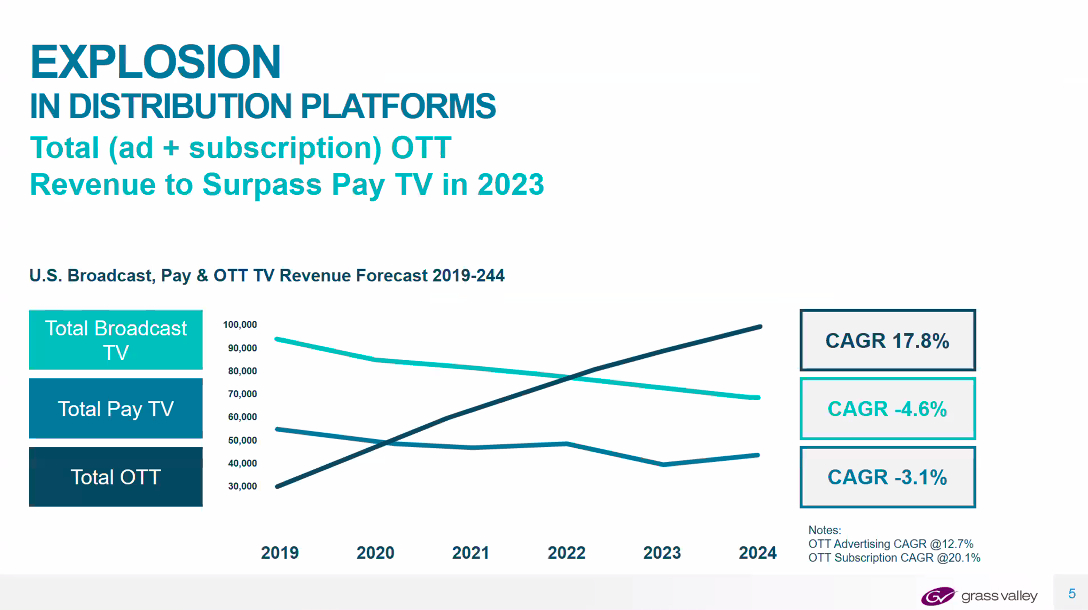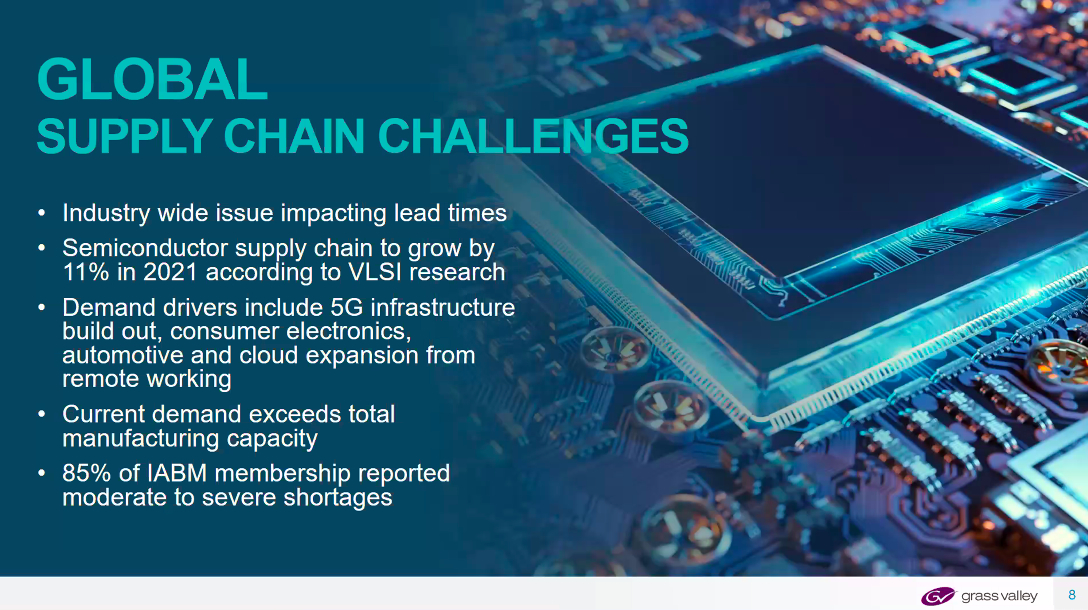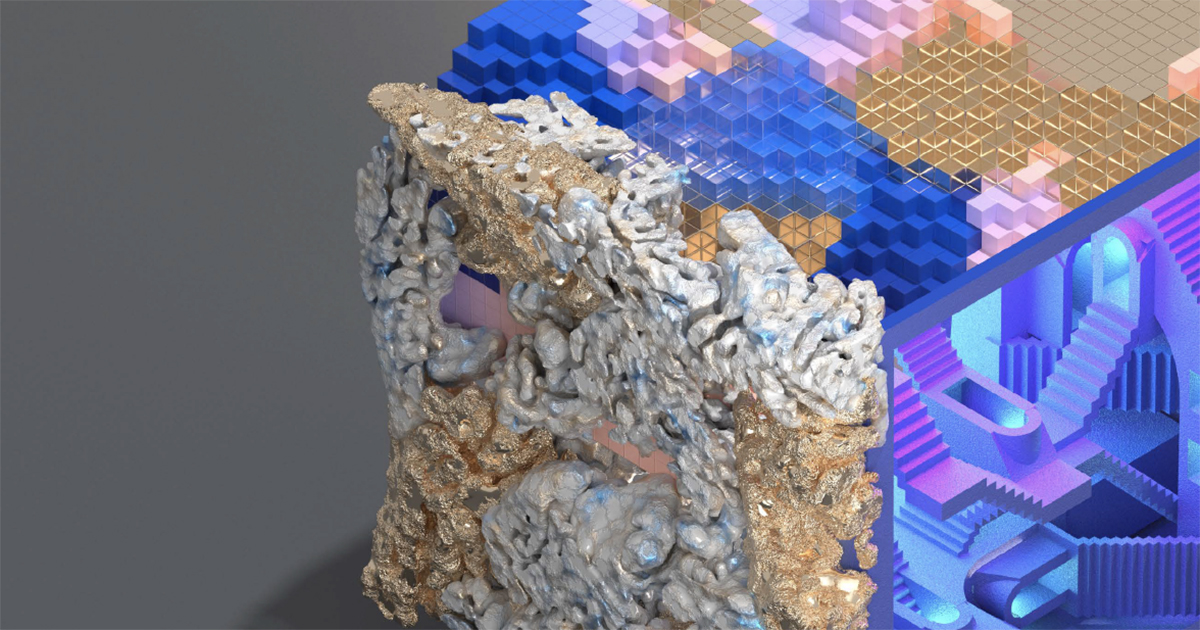

On the occasion of the Grass Valley Summer 2021 press conference, company CEO and President Tim Shoulders took the opportunity to outline some of the major technology trends we are experiencing in the media and entertainment industry around the globe, and how the global COVID-19 pandemic has impacted live production and broadcast revenues.
The cost of media rights continues to soar and production has become increasingly complex and expensive, factoring in demands for new content streams, delivery of UHD and HDR, and production plus distribution in IP.
“I join you from the road, and I must say it’s good to be back out visiting customer locations again,” Shoulders began. “I’m optimistic that the vaccines are having the right impact on reducing the severity of the pandemic in much of the North American and European markets we serve.
“But I do want to note there are markets we serve in Asia and South America where the pandemic is still disrupting life in a very meaningful way. I’m always cognizant of that — but optimistic that the vaccine roll-out globally will see better times ahead and life returning to normal.”
Shoulders took us through some of the key trends Grass Valley sees happening in the industry right now. “First of all, the competition for live content is as fierce as it’s ever been. We can see that rights holders are paying an extraordinary amount of money for content, and it’s certainly putting pressure on their budgets.
“We also see that the demand for new content is increasing. In particular with the pandemic we’ve seen an increase in media usage in 2020. And a lot of that media usage was over the top. OTT facilitates new formats, such as UHD and HDR, and oftentimes requires IP infrastructure to make these formats happen on the production side. All of this — new content, new formats and new infrastructure — adds costs for our customers,” said Shoulders.
“We saw for the first time in 2020 that total revenue from advertising and subscriptions in OTT platforms exceeded total pay TV advertising and subscriptions revenue. And as we look out into the future, by the end of 2022, we’re forecasting that total OTT revenues will exceed even broadcast TV revenues. So we’re certainly seeing a shift of time and in attention from our customers from traditional content delivery platforms to new OTT delivery platforms.

“So what does this all mean for our customers? Revenues are flat to declining, and their content rights costs and costs of production and distribution are often increasing. This puts a lot of pressure on our customers and their operating profits.
“When you add on top of that the complexities driven by COVID-19 including social distancing requirements, this has really accelerated a shift to remote working. Our customers have had a lot to deal with lately,” said Shoulders.
“On the vendor side, we’ve also had to deal with consequences from the pandemic. The latest consequence is the impact to our global supply chain for electronic components.
“As I’m sure you’re well aware, those of us in the supplier community for media technology share components that are common in other industries such as telecommunications and increasingly these days, automotive. And as we’ve seen disruptions to the supply chain in this pandemic, our industry is also affected.
“At Grass Valley I want to assure you we’re doing everything we can to keep lead times low for customers, and we’re being very creative about procurement strategies. We’re also participating in a very open and accessible way with the rest of the industry, to try to keep components that have been procured by others within the industry.
“This includes an initiative that I kicked off with the IABM, to have their membership share components where possible — where one industry member may have excess. We’re doing everything we can to make sure our media customers are taken care of, despite the challenges from this global supply chain issue,” he said.
“Viewers are not going to go back to old habits of consuming media, and successful media companies will find ways to produce more targeted content, specific to certain audiences and valuable to these smaller, more passionate audiences.”
— Tim Shoulders, Grass Valley

Eliminating the Risk in Trying Out New Revenue Models
Shoulders went on to talk about Grass Valley specifically, claiming that the company has a key part to play in the riddle faced by media content companies relating to stagnating revenues and higher costs. He believes Grass Valley can help customers unlock new revenue streams; help them efficiently create and distribute specialty content; and help to unify their streaming, linear and social workflows.
“We can lower the overall cost of production with new products, to help them eliminate the risk in trying new revenue models. We can help them increase their operating efficiency, so they can manage their operations anywhere. We can reduce deployment costs by providing a well-integrated platform that complies with industry standards. And we can help them improve the utilization of their technology investments through pay-per-use programs.
“At the core of the Grass Valley Media Universe is our platform, the Agile Media Processing Platform. AMPP is really the magic that holds the components of the Grass Valley Media Universe together,” said Shoulders.
“AMPP includes patented capabilities for realizing these applications across cloud and all the connected infrastructure. And it solves technical challenges in the cloud such as timing and latency: it’s all managed by the platform, so new applications that join the platform can have these problems pre-solved. It’s very scalable and allows for distributed workflows, cost-effectively realized in a public or private cloud environment.
“The Grass Valley Media Universe helps customers solve problems of location — particularly those problems that have been created by the pandemic. Intelligent timings built into the system allow contributions, whether from input, editing or control, from anywhere in the world for any particular application, so that the customer can have the workflow they need, when and where they need it.
“We all know live production requires low latency and near instant response times. The Grass Valley Media Universe is built for live production.
“Today, audiences demand high quality live content. Action-packed sport events have become much more attractive by leveraging instant replays of every angle of the action. LiveTouch gives us an ultra-fast replay system that is easy to use and has all the power and capability that we required.”
— Matthias Alexandru, Studio Berlin
“It’s built on a Kubernetes base modular architecture that offers a nearly infinite level of customization of customer media factories. It’s built to be scalable operationally and economically, and offers a pay-per-use model for customers that changes the utilization map for media technology — especially prepared to traditional CapEx models.
“It has a fully dynamic deployment model that really changes the game for software commissioning, eliminating a lot of client-side software and putting it in the cloud. And it utilizes secure centralized resources at known cloud service providers under the supervision of customers’ IP teams for on-premise deployments,” said Shoulders.

“It’s really a revolutionary cloud-native approach that addresses the needs of the broadcast industry, improving yield per asset for our customers. Improving the profit they get out of each media asset is more important than ever, and the GV Media Universe can help lower their cost per asset, which will increase their yield.
“Viewers are not going to go back to old habits of consuming media, and successful media companies will find ways to produce more targeted content, specific to certain audiences and valuable to these smaller, more passionate audiences. The GV Media Universe and GV AMPP is live and on air today, including customers like CBS Sports, EA Sports and AT&T. And I’m happy to say we’ve been adding customers at a very rapid rate — doubling the number of customers we have on the platform in the second quarter [of 2021].”
Livetouch Replay A Key Element for Studio Berlin Live Production
At the press conference Shoulders announced three new SDI/IP production solutions for switchers, cameras and replay. The GV K-Frame XP Standard Video Production Center joins the XP Compact in the switcher range. The K-Frame XP provides the flexibility to operate in any format, from HD to 4K UHD 2160p, and is claimed to offer the largest I/O footprint in the industry with 192 x 96 I/Os in IP, SDI or both. The full raster video processing provides a maximum of nine M/Es, each with six keyers, and 16 optional 3D iDPMs for any production.
LDX 150 is claimed to be the only camera that brings triple speed UHD with global shutter and Wide Color Gamut (WCG) acquisition on a NativeIP backbone. The new Xenios imager, paired with the global shutter, means best sensitivity with increased sharpness in fine structures and life-like images, a wide dynamic range in HDR, an improved signal-to-noise ratio and additional depth of field, even in low light conditions.
LiveTouch 2000 is the next generation of Grass Valley’s replay and highlights systems. The latest version is an ultra-high density video server that offers up to 12 UHD / 24 HD channels in 3 RU. The intuitive interface makes instant replay workflows quick and easy, in HD or UHD, suited for studio and sports applications.
“The Grass Valley Media Universe helps customers solve problems of location — particularly those problems that have been created by the pandemic. Intelligent timings built into the system allow contributions, whether from input, editing or control, from anywhere in the world for any particular application, so that the customer can have the workflow they need, when and where they need it.”
— Tim Shoulders, Grass Valley
Grass Valley recently announced that its LiveTouch replay and highlights system has become a key element of Studio Berlin’s upgraded live production workflow. The deployment sees the German production services provider expand its existing Grass Valley ecosystem with upscaled replay and highlights capability by adding 48 UHD HDR sQ server channels and 15 new LiveTouch panels supporting major live events, sports and autoracing.
Studio Berlin provides production services for primetime television content, such as live sports, entertainment shows and current affairs programming. The LiveTouch system delivers unmatched multi-angle capabilities and opens up collaborative workflows via virtual shared storage. Using LiveTouch, operators can edit files while they are still being created — without the need for file transfers — saving valuable time.
The new system has been designed in a way that it can be used as a single large replay system, or as separate units across Studio Berlin’s OB trucks as needed. “Today, audiences demand high quality live content. Action-packed sport events have become much more attractive by leveraging instant replays of every angle of the action,” said Studio Berlin CTO Matthias Alexandru. “LiveTouch gives us an ultra-fast replay system that is easy to use and has all the power and capability that we required.”
“We have a long history with Grass Valley and have been using its solutions for over 20 years; the team have a deep understanding of how we work and what our needs are,” added Nick Zimmermann, CEO of Studio Berlin.
LiveTouch allows the Studio Berlin team to deliver slow-motion and instant replays quickly and easily, supporting clip creation, editing, metadata entry and playback from a single interface.




